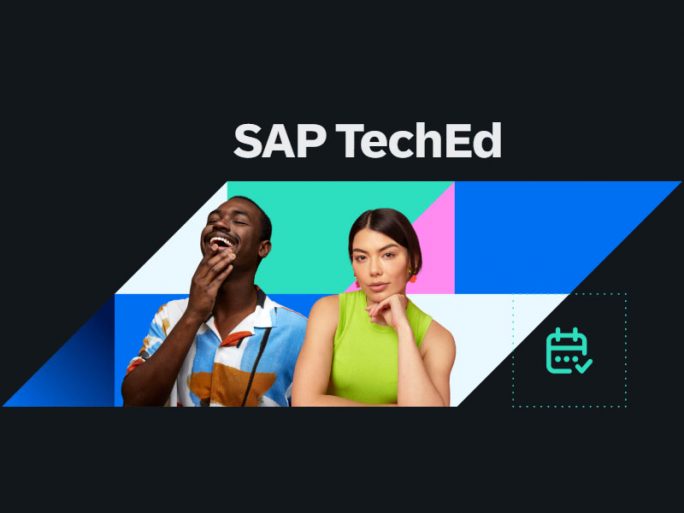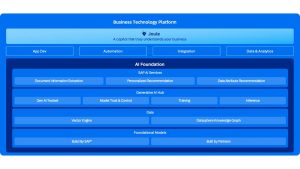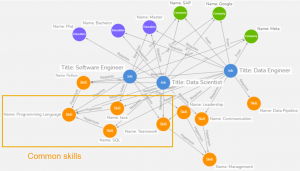SAP TechEd 2024: The Next Big Leap in AI is Collaborative Agents

SAP presented many new features at its congress, but all with the common denominator of elevating the user experience through AI and corporate data. We analyse them in this article.
The SAP TechEd 2024 conference, which is being held on 8 and 9 October, is providing us with a great number of innovations in different fields, but the main protagonist is Joule, SAP’s generative AI co-pilot.
This year, Europe’s leading software maker is extending Joule’s capabilities with the aim of boosting business productivity, integrating autonomous agents and enhancing the user experience across all its solutions. In this article, we’ll look at the key new features announced by SAP and how Joule is set to transform artificial intelligence into real business outcomes.
Joule and the new era of collaborative AI agents
Indeed, one of the most significant new developments announced at SAP TechEd is the addition of collaborative AI agents in Joule. From Q4 2024, these agents, specialising in different business functions, will work together autonomously to perform complex workflows. This is a major step forward in business productivity, enabling organisations to break down silos and improve collaboration between human teams and artificial intelligence.
How do collaborative agents work?
The key difference between these AI agents and other solutions is that they are not limited to a single type of task. Instead, Joule will combine multiple agents specialising in areas such as supply chain, finance and procurement management, among others. Each agent will handle its expert part of the process, adapting its strategies and executing key tasks to meet the organisation’s collective goals.
The company offered a couple of examples of this collaboration:
* Dispute management use case: Agents will analyse and resolve disputes related to incorrect invoices, unapplied credits or duplicate payments.
* Financial accounting use case: Agents will automate key financial processes, such as invoice payments, invoice processing and ledger updates, correcting errors in real time.
A future developed by users
From Q1 2025, developers will be able to create their own use cases for autonomous agents through SAP Build, the low-code, no-code and pro-code development platform, enabling unprecedented customisation. This flexibility will help organisations tailor Joule to their specific needs, opening up new possibilities for optimising productivity.
Extending Joule’s capabilities
In addition to the introduction of collaborative agents, SAP has announced a series of updates and enhancements to Joule that aim to expand its impact across all SAP solutions.
In doing so, SAP has significantly enhanced the core capabilities of Joule, including customisable capabilities that allow companies to develop specific workflows with low-code tools. These capabilities will complement SAP’s pre-defined functionality and can be integrated with third-party systems to deliver a fully integrated conversational experience.
By Q1 2025, Joule will also be able to translate natural language queries within enterprise applications into real-time data-driven insights, enabling businesses to unlock the value of their data faster and make informed decisions in less time.

Joule will also expand its availability across a number of SAP solutions, including SAP Service Cloud, SAP Concur and SAP HANA Cloud. For example, in SAP HANA Cloud, Joule will facilitate database administration tasks through natural language support, eliminating the need for in-depth knowledge of administrative tasks or query syntax.
For SAP S/4HANA Cloud, Joule will support a range of functions including sales, project management and warehouse operations. This expansion promises to increase efficiency across a wide variety of industries.
Joule is the future of business productivity
SAP’s goal with Joule is clear: to take generative AI beyond simple task support, making it a strategic partner in the enterprise. By the end of 2024, Joule will support 80% of the most common tasks within SAP, making it a key tool for organisations looking to stay competitive in today’s business environment.
One of the sectors where SAP sees the greatest impact from Joule is supply chain. Joule will be able to analyse data from across the supply chain and suggest solutions to the most complex problems using natural language. This will enable demand, inventory and supply planners to make more informed and proactive decisions. In addition, in solutions such as SAP Integrated Business Planning and SAP Product Lifecycle Management, Joule will help improve product development and sustainability in manufacturing.
As with all of its innovations, SAP has stressed that Joule will continue to adhere to its strict ethical and privacy guidelines, with humans always in the driver’s seat. While Joule will take on a more proactive role, workers will continue to be the final decision-makers.
Joule’s influence expands
In addition to its expansion into key SAP solutions, Joule will also enhance its mobile interface in SAP Mobile Start, allowing users to make queries, approve tasks and access people profiles from anywhere. It will also integrate with the SAP BTP Cockpit to facilitate account management on the enterprise platform.
With these enhancements, Joule will become an even more versatile and ubiquitous assistant, available in all areas of the organisation to make recommendations, perform transactional tasks and ensure that all necessary steps in workflows are completed.
As part of this Joule expansion strategy, SAP has also strengthened its strategic partnerships to accelerate innovation in artificial intelligence and support developers building AI use cases in the SAP ecosystem. Some of the notable collaborations include:
* Anthropic: The introduction of Claude 3.5 Sonnet within Amazon Bedrock will facilitate the creation of generative AI use cases in SAP AI Core.
* IBM: The incorporation of IBM’s Granite language models into the AI model repository in SAP will enhance SAP’s ability to provide transparent and efficient AI solutions.
* Meta and Mistral AI: SAP continues its multi-vendor language model strategy with the integration of Meta Llama 3.1 70B and Mistral Large 2, extending the text generation and advanced reasoning capabilities in the generative AI hub.
These partnerships are key for SAP as it solidifies its focus on delivering a robust, diverse and scalable AI platform for its enterprise ecosystem, enabling developers to leverage large language models (LLMs) and other advanced technologies to create highly customised business solutions.
Enhancements coming with SAP Knowledge Graph
SAP has also announced a number of enhancements to its artificial intelligence ecosystem, most notably the introduction of SAP Knowledge Graph, a service that promises to revolutionise the way developers and businesses leverage SAP’s vast ecosystem of enterprise data. This innovation will be generally available in Q1 2025 and will enable organisations to unlock the full value of their data by connecting it with the rich business context that SAP captures in its applications.
SAP Knowledge Graph, based on the SAP HANA Cloud knowledge graph engine, will enable developers to build AI capabilities by leveraging advanced data relationships present in SAP’s enterprise data models. This service comes pre-configured with a comprehensive representation of SAP business entities, including ABAP tables, CDS views, APIs and other key data models. This infrastructure will help to underpin AI models and provide more accurate and contextualised information, thereby reducing the risk of incorrect or irrelevant results.

The Knowledge Graph is essential because it infuses meaning into business data, connecting and contextualising different data sets within SAP. This gives developers and data scientists the ability to easily explore relationships and semantics within SAP data, accelerating data-driven innovation and AI, always with a focus on the specific business context.
The initial release of this service will be focused on SAP S/4HANA, providing a semantic layer that will connect more than 450,000 ABAP tables, 80,000 CDS views and thousands of SAP Fiori applications. This will significantly reduce the complexity of manual data modelling by providing out-of-the-box relationships between entities such as purchase orders, invoices and customers.
SAP is already using this new service in its internal developments, highlighting its importance for training SAP Foundation Model for structured data, a model introduced earlier this year. This approach ensures that the predictions and insights generated by the model utilise SAP’s vast business context. A key example presented at SAP TechEd 2024 is the model’s ability to auto-complete sales orders in SAP S/4HANA Cloud, demonstrating the potential of generative AI to improve operational efficiency and predictive accuracy in the business world.
SAP Build and new capabilities for developers
As part of the battery of new features showcased at the conference, SAP demonstrated significant advances in the area of application development and automation through new enhancements to SAP Build and its SAP BTP business technology platform. These updates reflect SAP’s commitment to accelerating agile development, combining low-code and pro-code tools to enable companies to efficiently build, extend and automate applications, streamlining business processes and responding quickly to market demands.
One of the key announcements was the expansion of SAP Build, the end-to-end platform that enables developers to extend the capabilities of SAP S/4HANA Cloud and other enterprise applications. SAP has introduced enhancements that simplify extension development, integrate generative AI and expand access to ABAP Cloud development tools.
![]()
Michael Ameling, EVP and Chief Product Officer of the SAP Business Technology Platform, said these enhancements mark an ‘evolutionary step’ for both SAP Build and its global developer community, highlighting the ease with which users will be able to build and extend business processes with direct access to ABAP tools from SAP Build.
One of the most significant enhancements is the extensibility wizard that allows developers to access SAP Build directly from SAP S/4HANA Cloud Public Edition. This integration makes it possible for users to create and extend custom fields, business logic and processes in both on-stack and side-by-side environments, while maintaining business context throughout the process. This means that business-related events and objects are preserved, allowing developers to change environments without losing critical information.
Starting in Q4 2024, the extensibility wizard will enable developers to create custom applications using SAP Fiori and SAPUI5, taking full advantage of SAP Build features. This functionality will significantly enhance the ability of enterprises to create modern, customised user interfaces that integrate seamlessly with SAP S/4HANA.
As we previewed earlier, another major advancement introduced is the integration of generative AI capabilities into SAP Build, powered by Joule. By the last quarter of 2024, tools such as code explanation and documentation search will be available in SAP Build Code, reducing development time for Java and JavaScript programmers. Joule will also enable automated workflows in SAP Build Process Automation supported by generative AI.
By Q1 2025, ABAP developers will be able to generate high-quality code and unit tests through Joule, ensuring that these developments comply with the ABAP Cloud development model. Joule will also be able to provide detailed explanations of legacy code, making it easier to modernise legacy code bases and migrate to a clean core. This capability will not only speed up software upgrade projects, but also reduce the manual burden of interpreting legacy code.
In addition, Joule will integrate with SAP Build Work Zone, a low-code tool for creating customised enterprise sites. With this integration, Joule will provide intelligent support for navigating through data from connected enterprise systems, enhancing the user experience by offering real-time assistance and data-driven recommendations. By Q1 2025, developers will also be able to enhance Joule with customisable skills through Joule Studio in SAP Build, extending its capabilities across both SAP and non-SAP applications.
More access to ABAP development tools
Another major enhancement is the expansion of access to ABAP development tools within SAP Build, which will enable developers to work with ABAP Cloud projects from the SAP Build Lobby (the starting point for applications built on top of the SAP Build suite) by the end of 2024. This integration is designed to facilitate collaboration across multi-disciplinary teams (also known as merge teams) and to create custom extensions and processes across all technology stacks. By directly integrating ABAP development environments into SAP Build, workflow is simplified and the need to switch between different platforms is eliminated, significantly improving development efficiency.
More versatility in SAP Datasphere
Finally, we can’t forget the new integrated data lake capabilities for SAP Datasphere, its cloud data management solution. These enhancements, available by the end of Q4 2024, are built on SAP HANA Cloud and extend the Business Data Fabric architecture by integrating a data lake storage option. This will enable enterprises to access, manage and analyse data in cloud and hybrid environments while preserving context and business logic.
New features include integrated object storage, which facilitates scalable storage of large volumes of data, and Spark Compute, which enables efficient data transformation and processing. In addition, the SQL on files feature will allow developers to access data in the object store without duplicating it, optimising data integration, reducing redundancy and ensuring consistency.
These capabilities enable large-scale import and integration of data from SAP and non-SAP sources while maintaining the original structure and context. This approach reinforces SAP’s strategy to deliver more efficient and accessible enterprise data fabric solutions for AI-based innovation and informed decision/making.
In conclusion, the vast majority of innovations announced by SAP during TechEd 2024 highlight the importance of AI and data in ensuring business competitiveness and continuity. These advances also make it easier for workers to focus on areas where human ingenuity is key—and always in the driver’s seat.